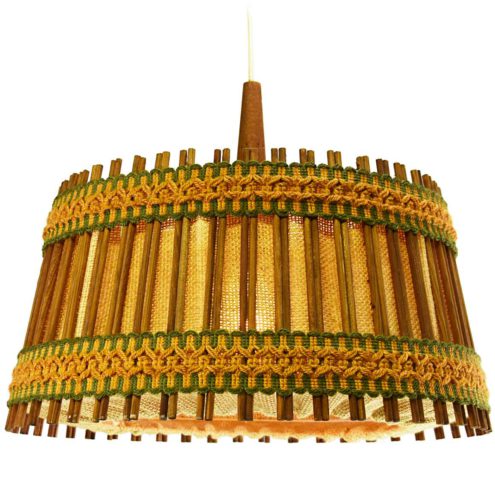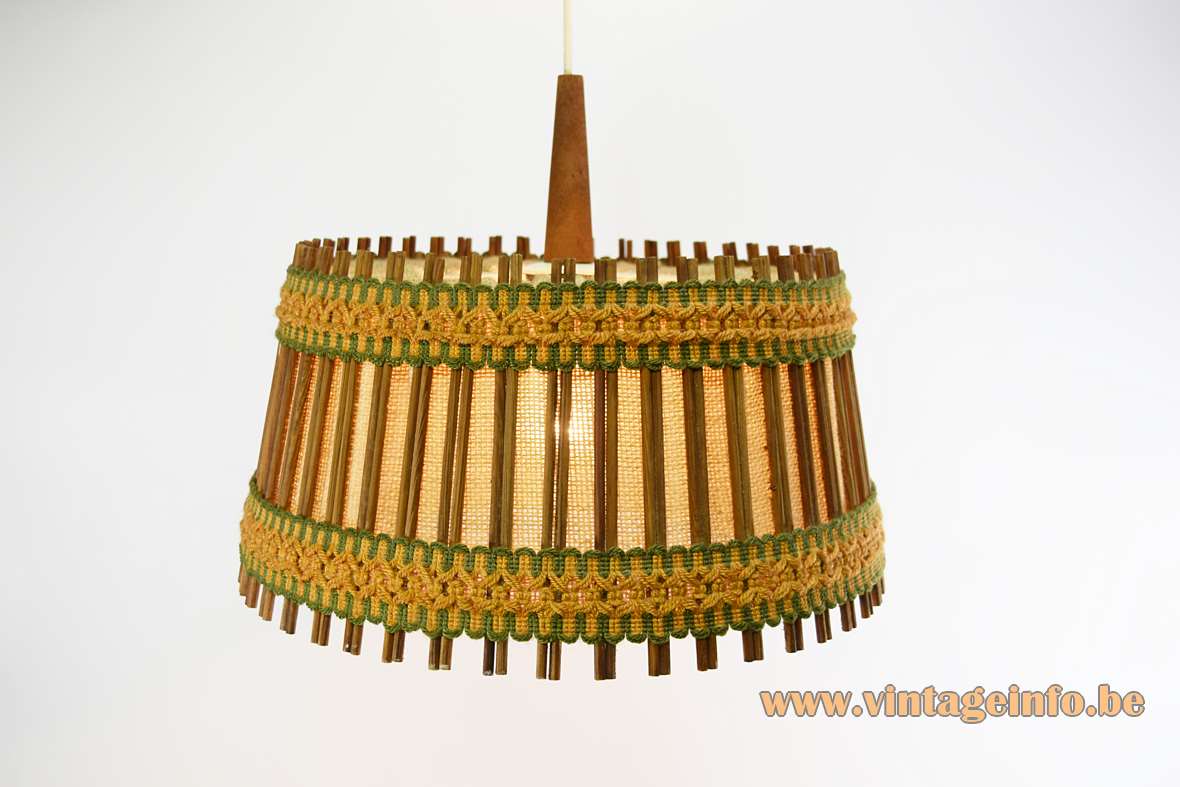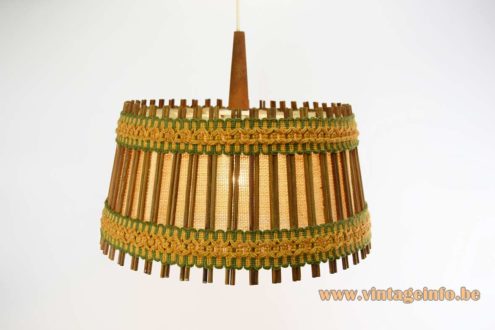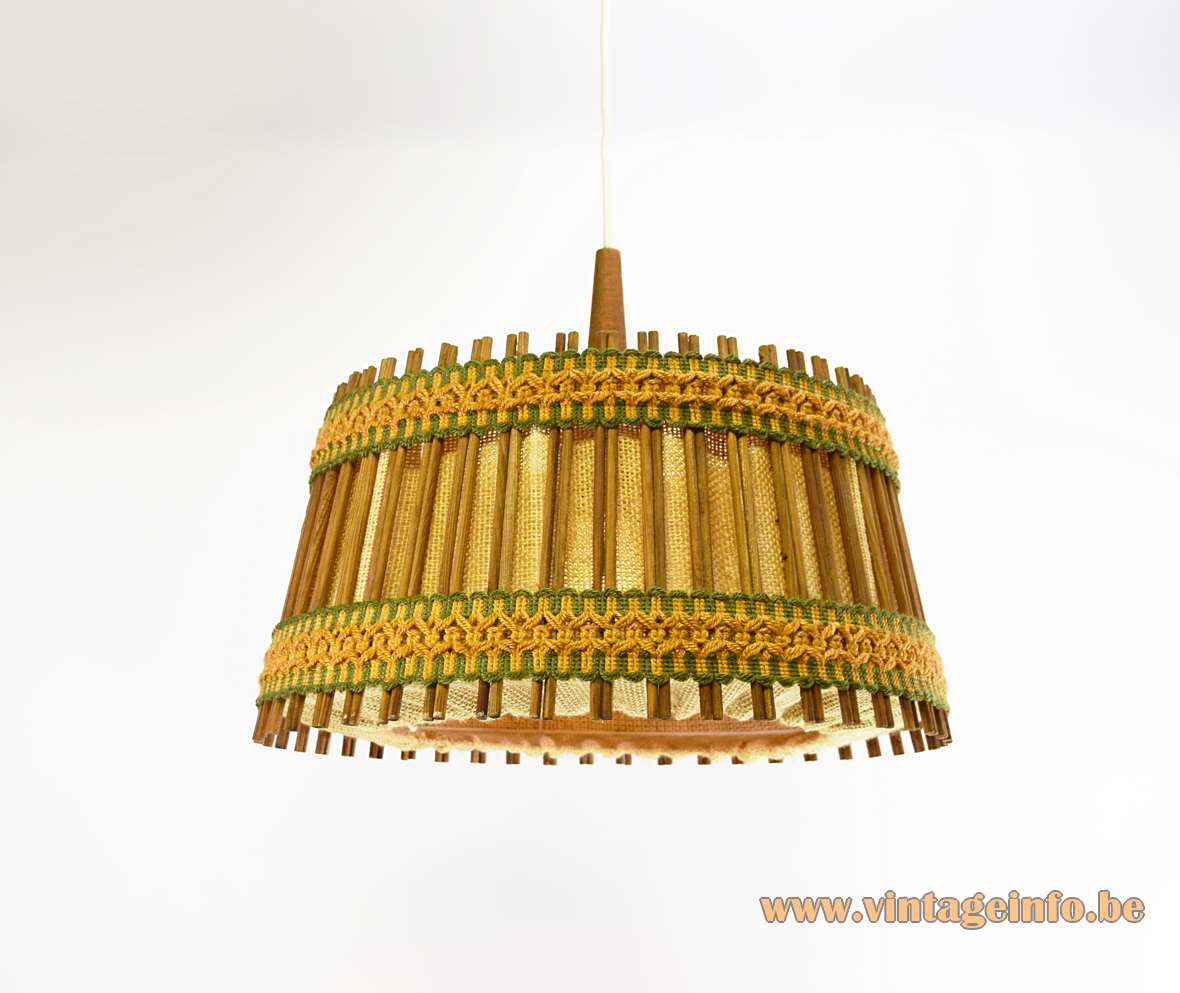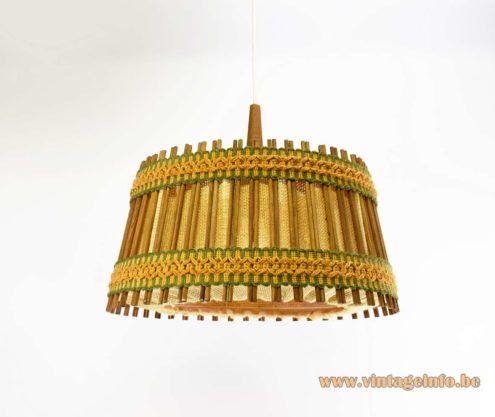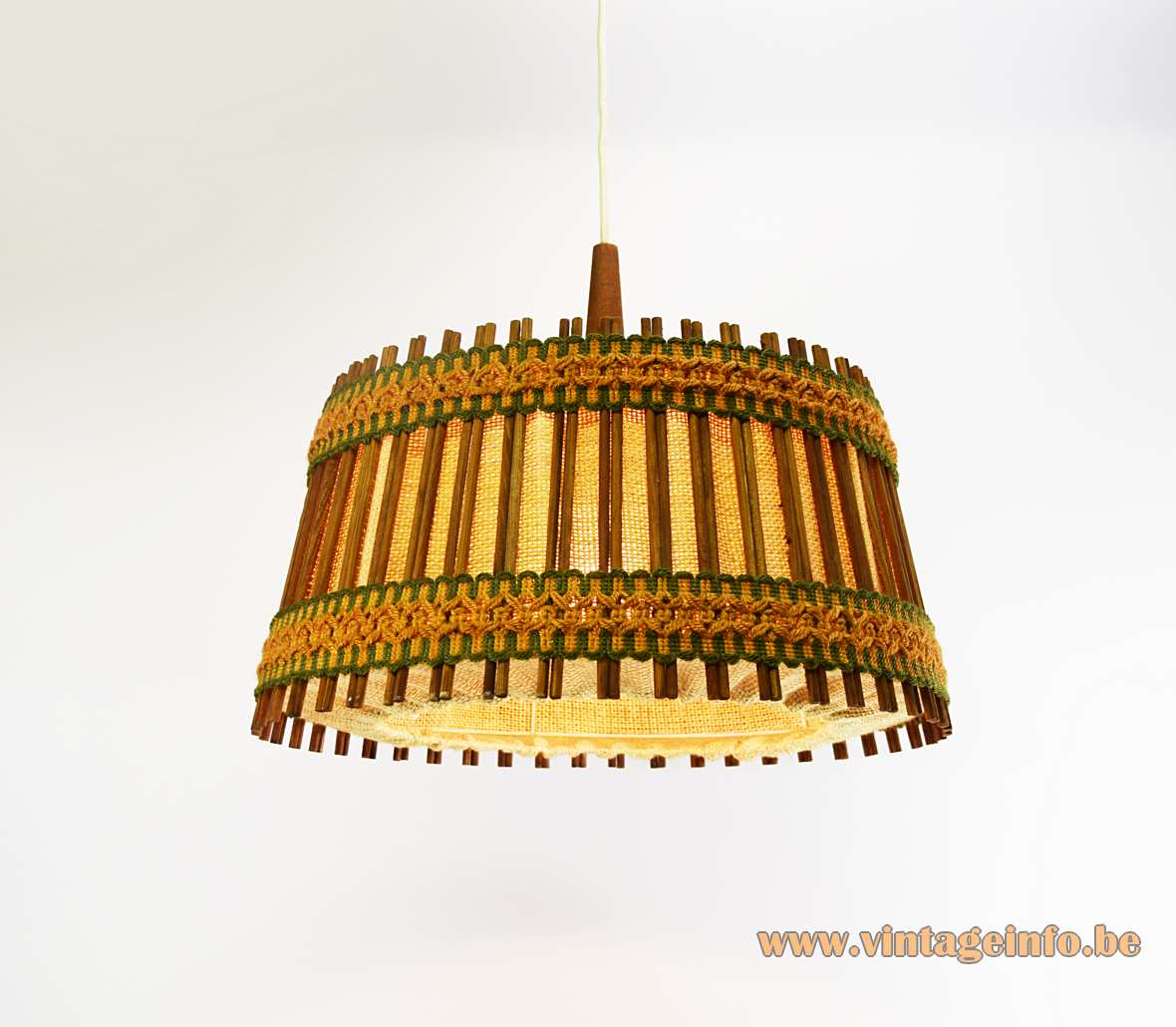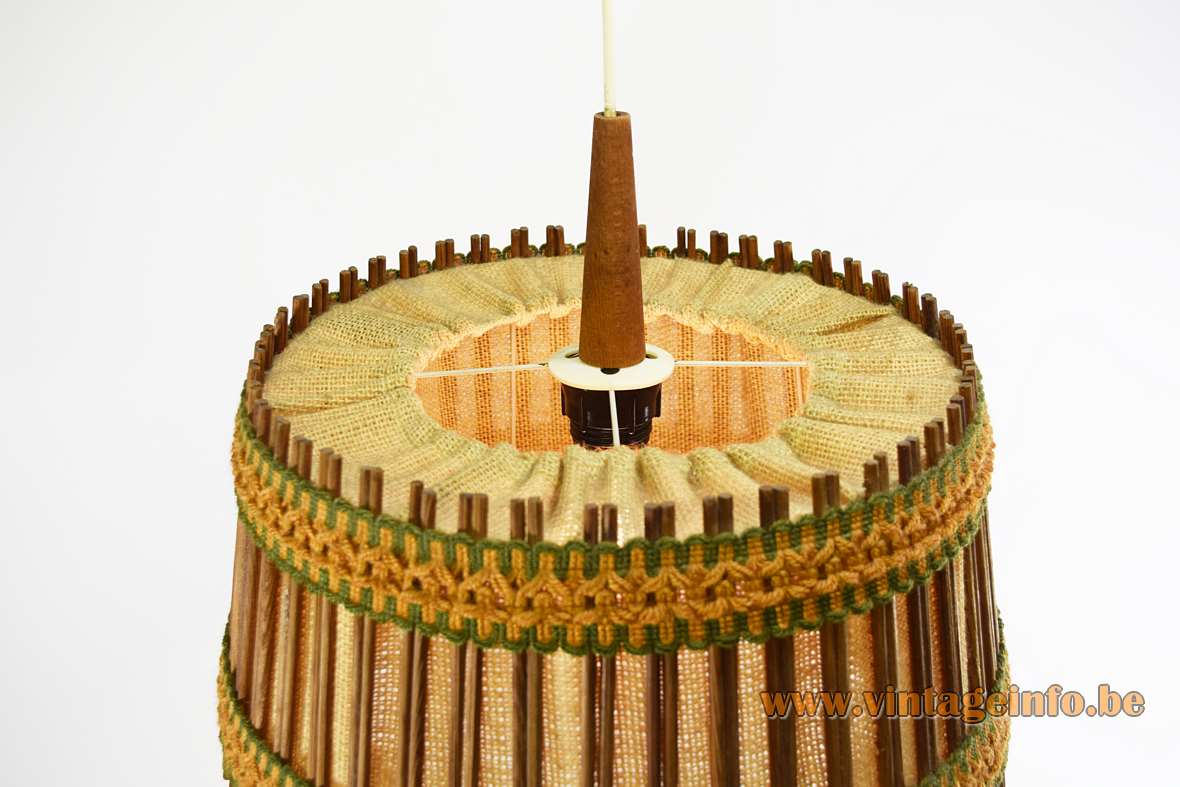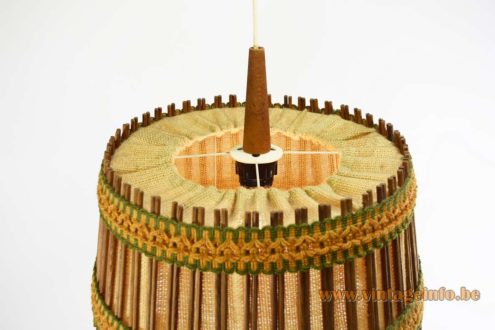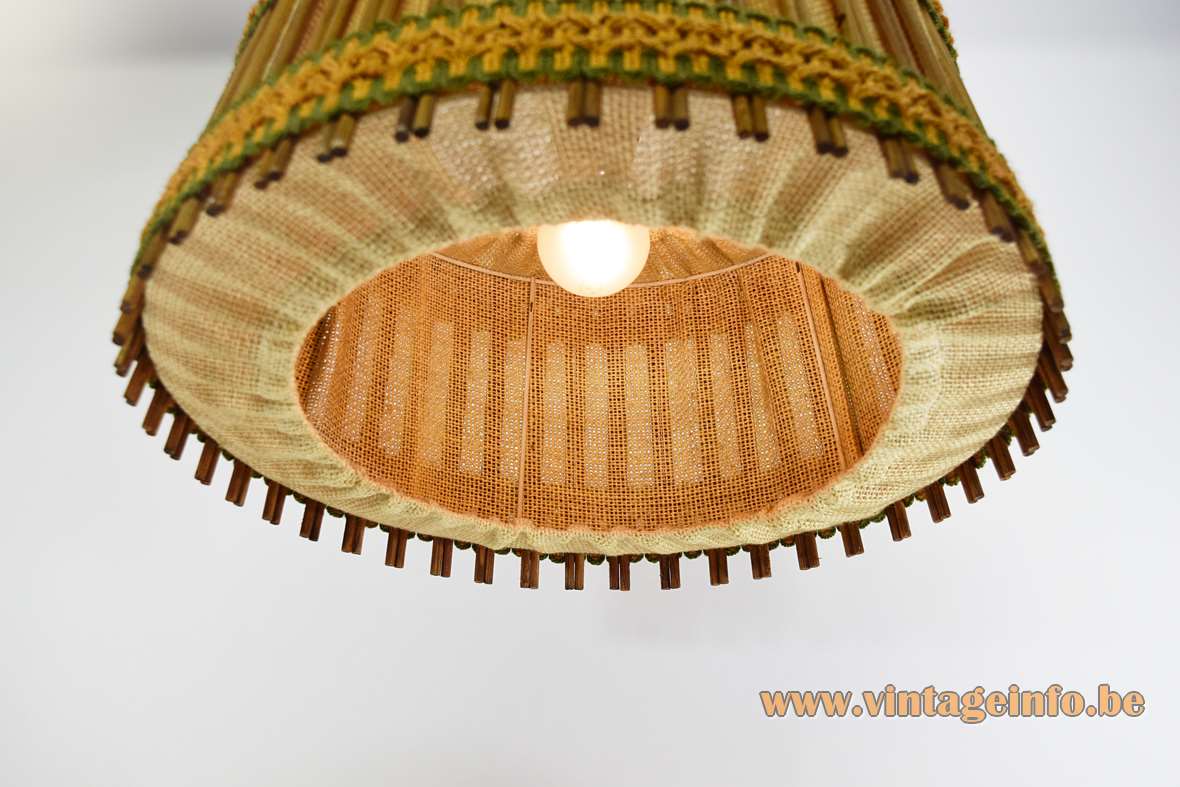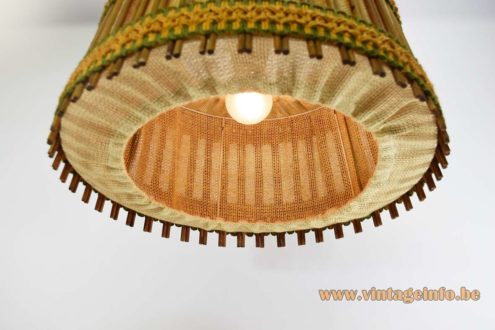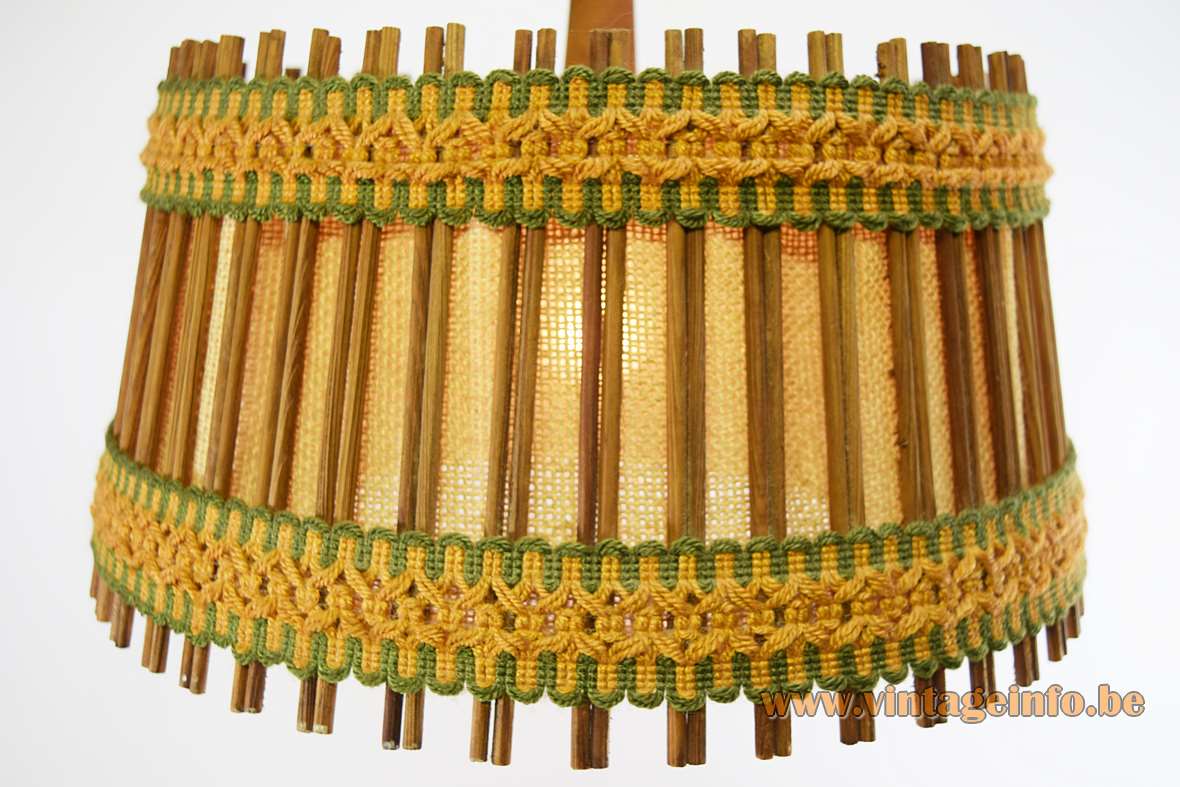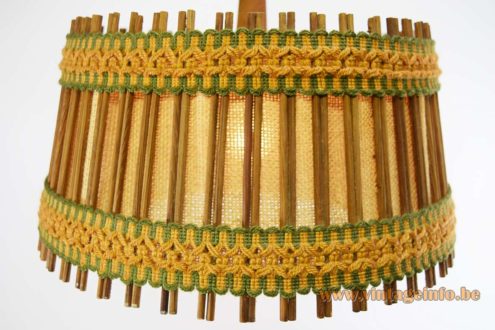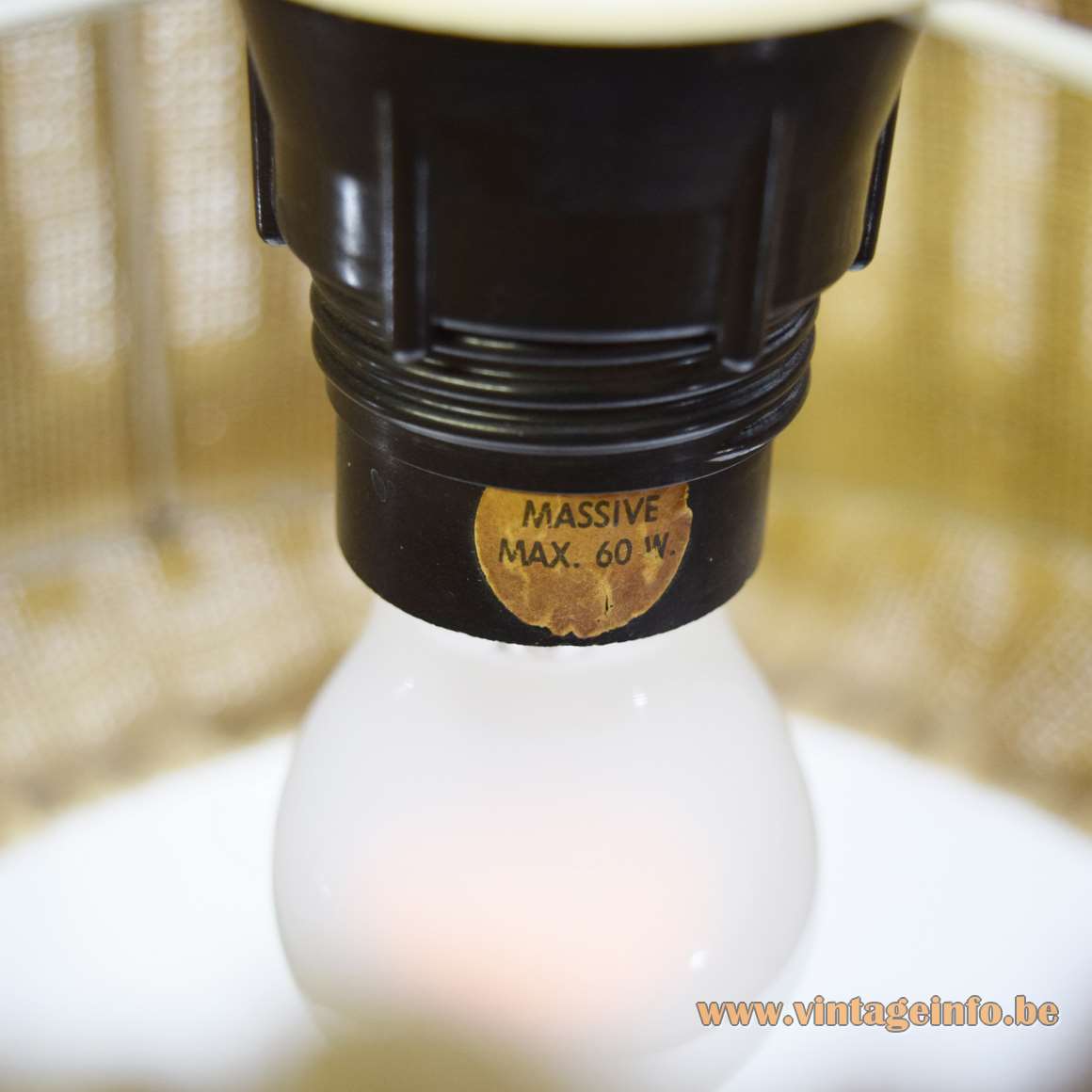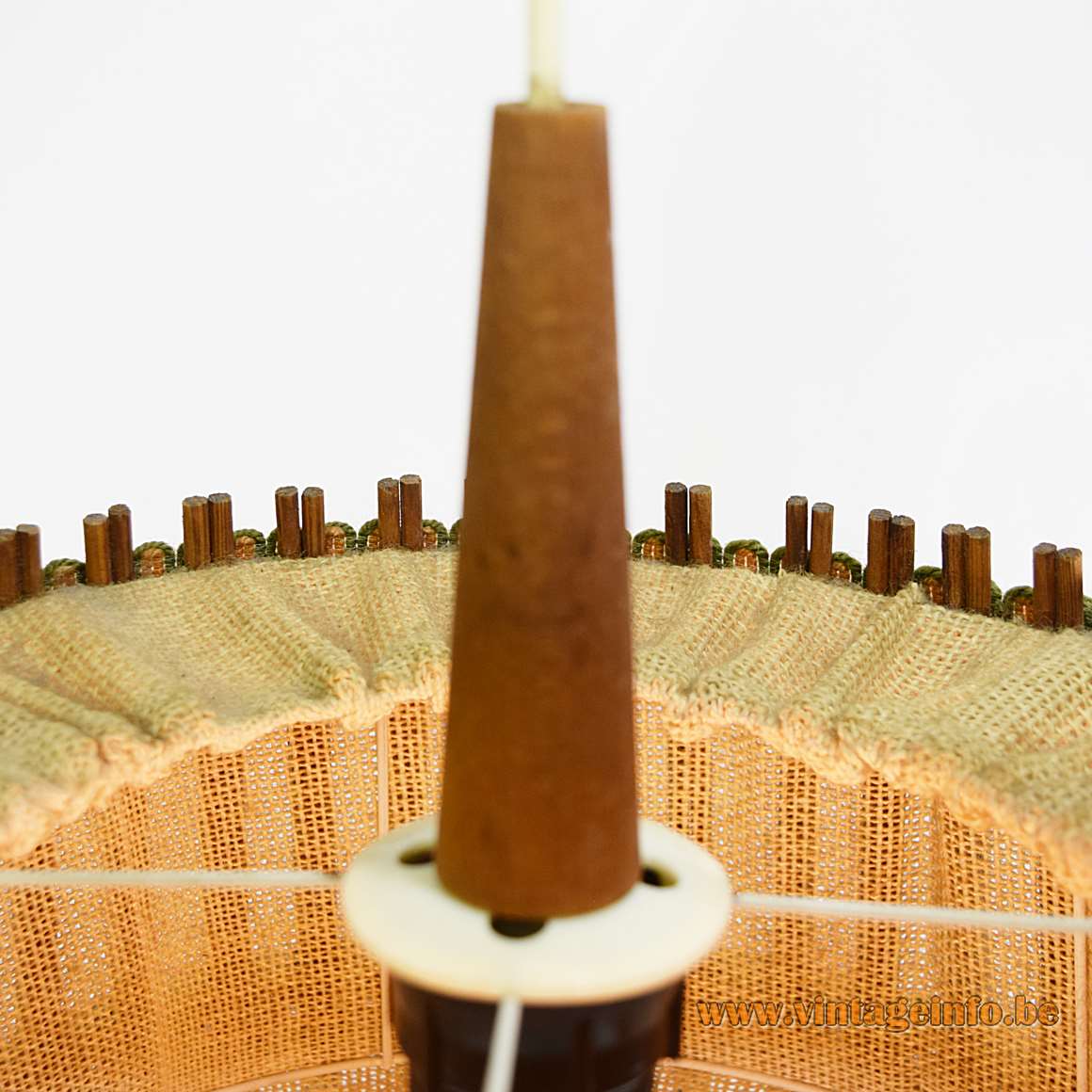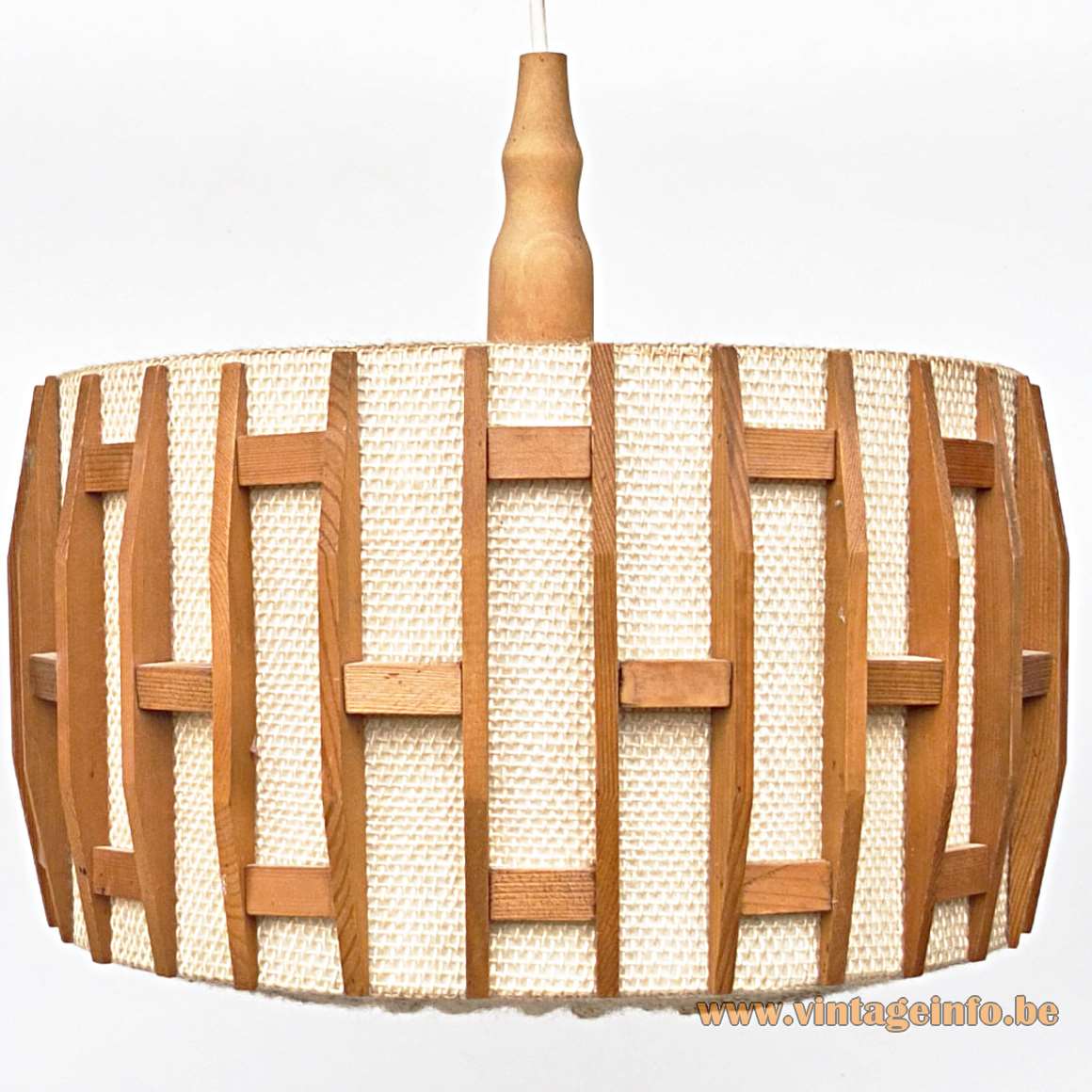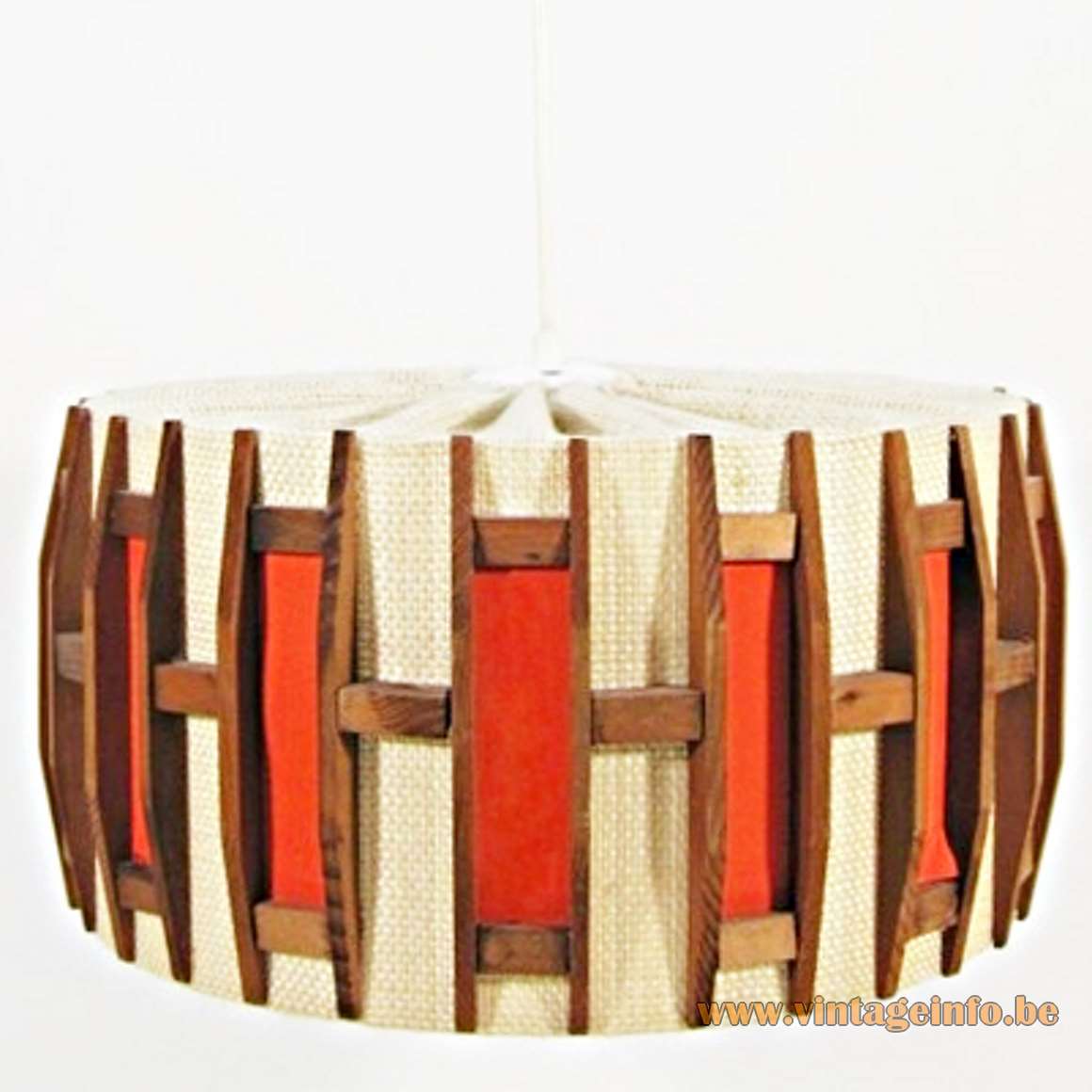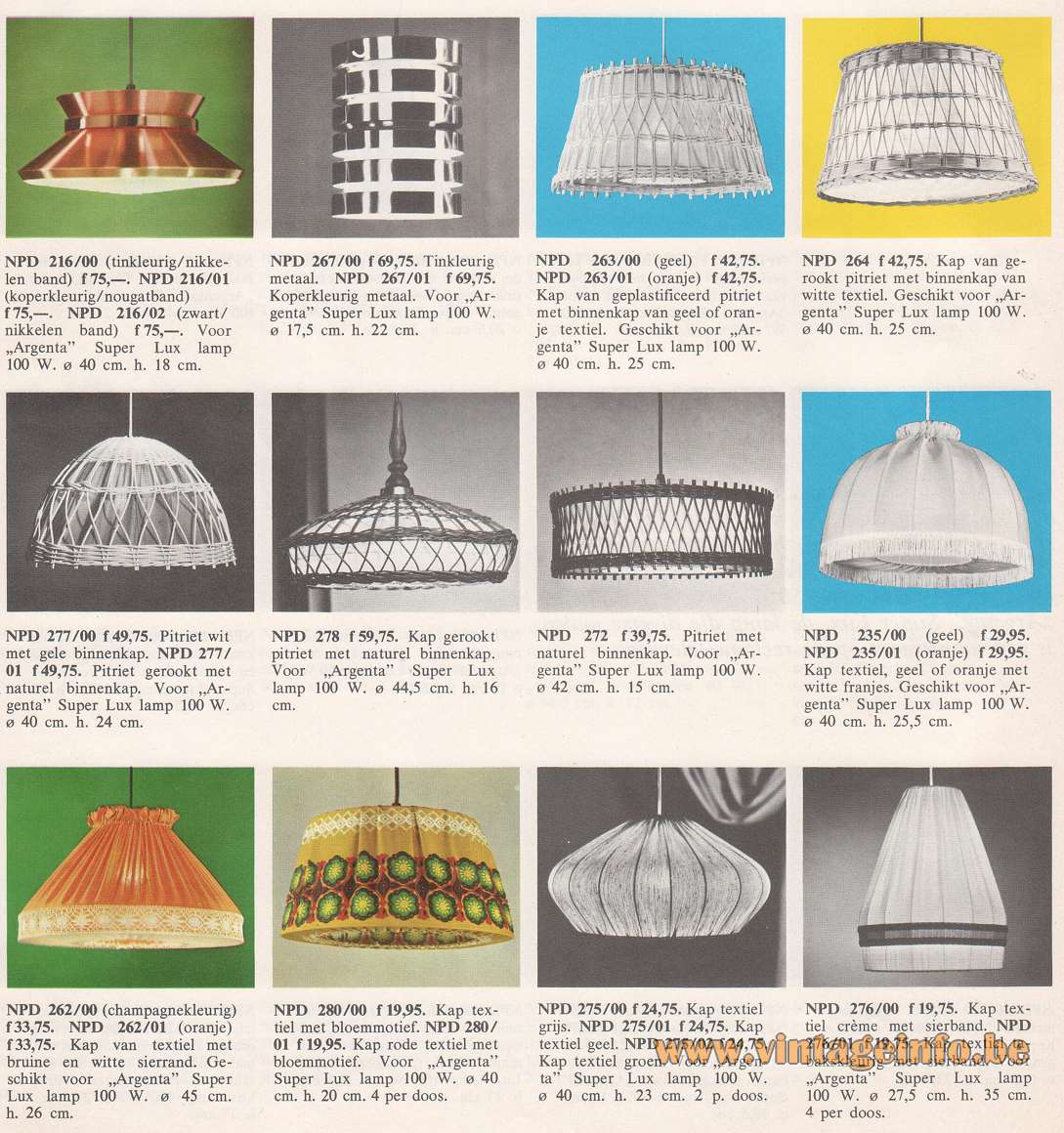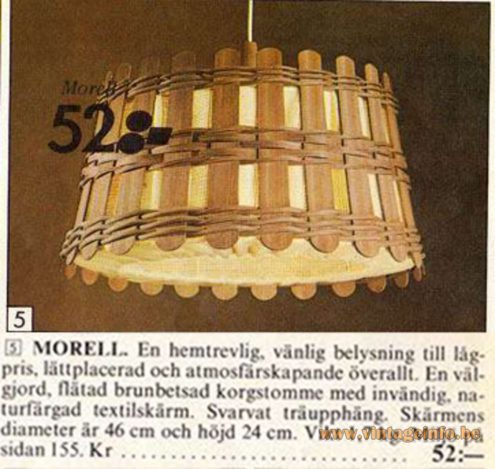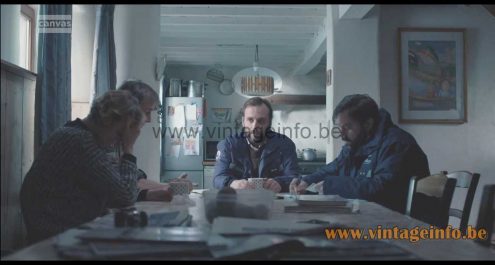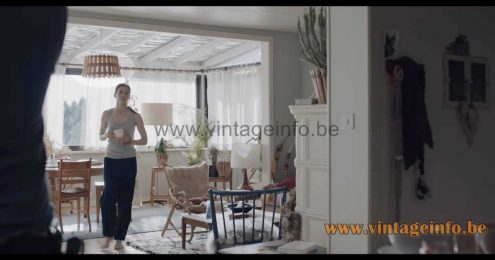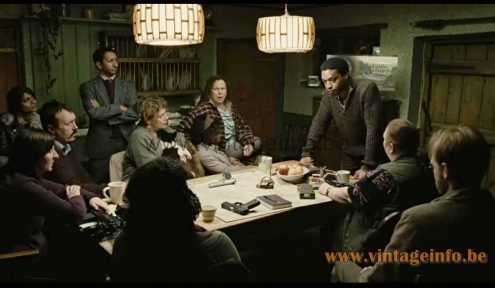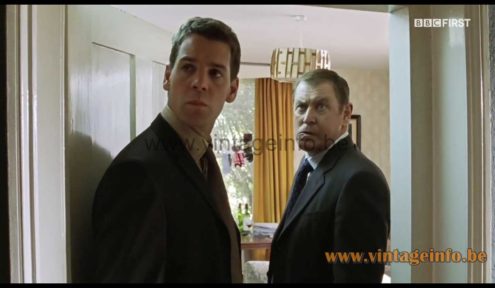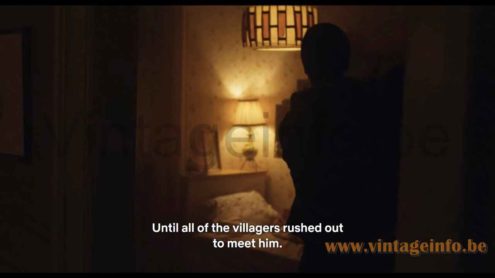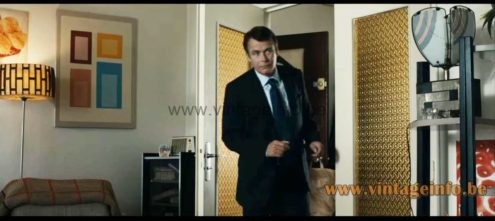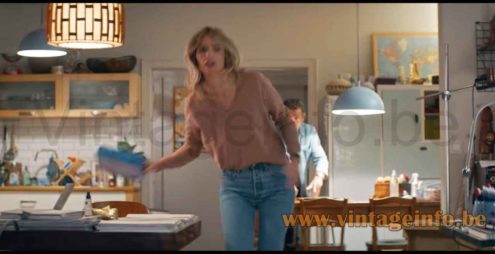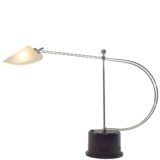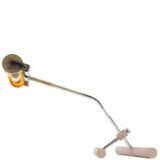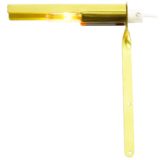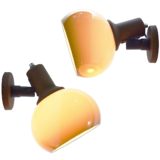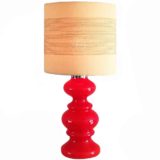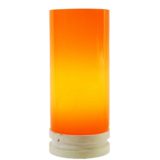Jute and Teak Pendant Lamp
Label on the black Bakelite socket and the teak cone on top.
Two other lamps in this style by Massive: Jute and pine pendant lamps. They were also sold (or made and also sold by Massive) by the Swiss-German company Temde. Also the Dutch Herda company sold these lamps.
Philips pendant lamps in a catalogue from 1968
Philips pendant lamp in a catalogue from 1967
Morell pendant lamp by IKEA in a catalogue from the seventies. It was also sold by Massive and produced by Massive.
IKEA
IKEA, formerly known by its full initials, Ingvar Kamprad Elmtaryd Agunnaryd, is a multinational group, headquartered in Delft, The Netherlands, but founded in Älmhult, Sweden in 1943 by then-17-year-old Ingvar Kamprad, born 30 March 1926.
The IKEA company started as a mostly mail-order sales business. The first store was opened in Älmhult, Småland, Sweden in 1958. The first stores in other countries were opened in Norway (1963) and Denmark (1969). In 1973 a shop was opened in Switzerland, soon followed by shops in Germany and Japan (1974). Australia and Hong Kong in 1975, Canada in 1976, Austria in 1977, Singapore and The Netherlands in 1978, Spain in 1980. Iceland and France in 1981, Saudi Arabia in 1983 and Belgium and Kuwait in 1984. The USA followed in 1985.
Links (external links open in a new window)
Massive – Wikipedia (in Dutch)
The complete history of the Philips company
Ennemi public – IMDB Movie Database
Zone Blanche – Black Spot (TV series) – Wikipedia
Zone Blanche – Black Spot (TV series) – IMDb
Children of Men (2006) film – Wikipedia
Children of Men (2006) film – IMDb
Midsomer Murders TV Series – Wikipedia
Midsomer Murders TV Series – IMDb
10 Jours en Or (2012) film – IMDb
The Angel (2018) film – Wikipedia
8 Rue de l’Humanité (2021) film – Wikipedia
8 Rue de l’Humanité (2021) film – IMDb
Vintageinfo
Marble and chrome eyeball floor lamp
Guzzini style globe table lamp
Jute and Teak Pendant Lamp
Materials: Round lampshade made of jute and teak sticks. 2 orange and green fabric (wool or cotton) ribbons round the lampshade, on top and bottom. Teak conical tube on top. Bakelite E27 socket.
Cord Length: 60 cm / 23.62’’
Height: 23 cm / 9.05”
Width: ∅ 45 cm / 17.71”
Electricity: 1 bulb E27, 1 x 60 watt maximum, 110/220 volt.
Any type of light bulb can be used, not a specific one preferred.
Period: 1960s, 1970s – Mid-Century Modern.
Designer: To be appraised.
Manufacturer: Massive, Mortsel, Kontich and Wommelgem, Belgium.
Other versions: This jute and teak pendant lamp exists in several variations and styles.
Lamps In The Movies!
Ennemi Public (2016)
A Massive jute and teak pendant lamp was used as a set decoration in the 2016 crime drama TV Series Ennemi Public (Public Enemy) , made in Belgium. Starring Stéphanie Blanchoud, Jean-Jacques Rausin and Clément Manuel.
Zone Blanche (2016 )
A Massive jute and teak pendant lamp was used as a set decoration in the 2016 French-Belgian television thriller series Zone Blanche (White zone but named Black spot ) . Starring Suliane Brahim, Hubert Delattre and Laurent Capelluto. Many other lamps were used as a set decoration. You can find several of them over here.
Children Of Men (2006)
Two Massive jute and pine pendant lamps were used as a set decoration in the 2006 dystopian science fiction action-thriller film Children Of Men. Starring Clive Owen, Julianne Moore and Michael Caine.
Midsomer Murders (2003)
A Massive jute and pine pendant lamp was used as a set decoration in the 2003 TV series Midsomer Murders S7 E4. Starring John Nettles and Neil Dudgeon.
The Angel (2018)
A Temde pendant lamp was used as a set decoration in the 2018 Israeli-American spy thriller film The Angel. Starring Marwan Kenzari, Toby Kebbell and Sasson Gabai.
10 Jours en Or (2010)
A jute and teak Temde floor lamp was used as a set decoration in the 2010 French comedy drama film 10 Jours en Or (10 Gold Days). Starring Franck Dubosc, Claude Rich and Mathis Touré. Only the Swiss-German company Temde sold the floor lamps. The other lamp is a fabrication of a pendant lamp and a table lamp, in all probability an Odessa lamp from Le Dauphin, not Philippe Jean, France.
8 Rue de l’Humanité (2021)
A Temde pendant lamp was used as a set decoration in the 2021 French film 8 Rue de l’Humanité (Stuck Together). Starring Dany Boo n, Liliane Rovère and Yvan Attal.
Massive
Origins and Early Growth (1926–1970s)
Massive started in 1926, when Pieter-Jozef De Jaeck founded a bronze foundry in Wilrijk, near Antwerp, Belgium. Initially, the company crafted traditional bronze items such as candlesticks, crucifixes, and chandeliers in-house using established casting methods.
However, as the market evolved during the 1930s and 1940s, Massive quickly adapted to meet changing consumer needs. Therefore, the company gradually introduced more functional lighting products for households. After World War II, electric lighting became more popular across Europe.
Consequently, Massive began combining classic design with modern electrical technology. This strategic shift enabled the brand to reach new customers and grow steadily.
By the 1950s, Massive had earned a solid reputation across Belgium. Its lighting fixtures – often inspired by mid-century trends – were both affordable and practical. Moreover, they were widely available in hardware and furniture stores. As a result, they became a staple in many homes.
In the 1960s, Eddy De Jaeck, the founder’s son, joined the company. He introduced semi-industrial production techniques and optimized logistics. As a result, Massive shifted from a craft-based workshop to a mass production business. This major change laid the groundwork for international expansion.
Design Approach and Product Strategy
Massive became known for producing lighting in the style of more exclusive brands. While they didn’t make direct copies, many of their designs were clearly “inspired” by well-known models. Nevertheless, the company also released some original highlights that stood out in their own right.
In addition to their own production, Massive distributed a significant number of lamps made by other manufacturers. This strategy was not unusual at the time. Many lighting companies across Europe followed the same practice to broaden their product range and appeal to a wider market.
International Expansion and Market Leadership (1970s–2000s)
During the 1970s, Massive expanded rapidly. With Eddy De Jaeck at the helm, and later his sons Piet and Jan De Jaeck, the company grew into a multinational enterprise. To stay affordable and increase volume, Massive moved production to Eastern Europe. Later, it extended manufacturing to China. This deliberate strategy helped the brand stay competitive in a changing market.
By the 1980s, Massive had become one of the top lighting brands in Europe. Its catalog included thousands of options for both indoor and outdoor use. Furthermore, the brand balanced style, affordability, and reliability. Because of this, it gained popularity in both Western and Eastern Europe.
In the Netherlands, Massive began operations in 1962. In addition, the company opened Massive Gorinchem in 1969. This location served as the Dutch headquarters for more than 40 years. Eventually, in late 2012, it relocated to Eindhoven.
Ownership Changes and the Philips Takeover (2002–2010)
In 2002, the De Jaeck family sold Massive to CVC Capital Partners for about €250 million. This move transformed the company into part of the new group, Partners in Lighting International (PLI).
Over the next years, PLI expanded quickly. For example, in 2005, the group acquired Modular Lighting Instruments. Then, in 2006, it added Trio Leuchten from Germany. As a result, PLI marketed over 10,000 products under brands like Massive, Lirio, Trio, Aqua, and Cucina.
The company grew further by employing about 5,000 people and operating in more than 70 countries. In 2007, Royal Philips Electronics announced plans to acquire PLI. The deal closed in 2008, which strengthened Philips ‘ position in the European home lighting market.
Soon afterward, Philips rebranded all Massive stores in Belgium as Light Gallery. By 2014, the Massive name had vanished from packaging and store displays alike.
The End of an Era and the Move to Signify (2010–2024)
After the acquisition, Massive ‘s visibility declined steadily. In 2016, Philips Lighting became a separate, publicly traded company. Then, in 2018, the company rebranded as Signify. This new identity marked a fresh focus on smart and connected lighting.
Eventually, in April 2024, Signify shut down the Light Gallery website and redirected all content to its main platform. Although the Massive name no longer appears in stores, its legacy lives on. Millions of homes throughout Europe still feature its recognizable and timeless lighting designs.
